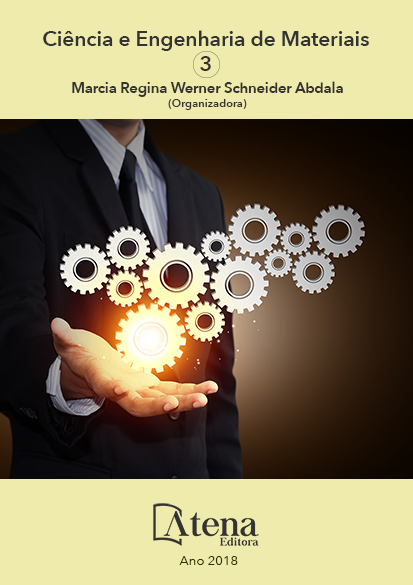
ESTUDO DE TRATAMENTO DE ÁGUA EM EFLUENTES REFRATÁRIOS POR PROCESSO FENTON PARA DEGRADAÇÃO E MINERALIZAÇÃO DESSES COMPOSTOS EM REATOR DE ESCALA LABORATORIAL MODELO PARR
O objetivo deste trabalho é quantificar
o efeito da Temperatura (T), da Razão Molar
Estequiométrica Fenol/Peróxido de Hidrogênio
(R), da Vazão de Ar (QAR) e do pH do efluente
no tratamento por Processo de Oxidação
Avançada (POA) de um efluente líquido
contendo o composto orgânico sintético (fenol).
Neste processo, o peróxido de hidrogênio
foi utilizado como fonte de radical hidroxila,
eficaz na degradação do composto orgânico.
Os estudos experimentais foram realizados
em um reator batelada em escala laboratorial,
modelo tipo PARR, tendo um efluente fenólico
sintético com uma concentração inicial (CF0)
de 500 mg.L-1. A degradação do fenol foi
acompanhada com o uso da técnica analítica da
Cromatografia Líquida de Alta Eficiência (CLAE)
e a mineralização do composto foi monitorada
com um analisador de Carbono Orgânico Total
(COT). Uma degradação do fenol superior a
99% e uma conversão do COT superior a 70%
foram obtidas, respectivamente, nas condições
otimizadas do processo (T=90ºC; R=100%,
pH=7 e QAR=100 NL.h-1).
ESTUDO DE TRATAMENTO DE ÁGUA EM EFLUENTES REFRATÁRIOS POR PROCESSO FENTON PARA DEGRADAÇÃO E MINERALIZAÇÃO DESSES COMPOSTOS EM REATOR DE ESCALA LABORATORIAL MODELO PARR
-
DOI: Atena
-
Palavras-chave: Fenol, POA, COT, CLAE.
-
Keywords: Phenol, AOP, TOC, HPLC.
-
Abstract:
The objective of this work is
to quantify the effect of Temperature (T),
Stoichiometric Molar Ratio Phenol / Hydrogen
Peroxide (R), Air Flow (QAR) and pH of the
effluent in the Advanced Oxidation Process
(AOP) treatment of a liquid effluent containing
the synthetic organic compound (phenol). In
this process, hydrogen peroxide was used
as a source of hydroxyl radical, effective in
the degradation of the organic compound.
The experimental studies were carried out in
a laboratory-scale batch reactor, model type
PARR, having a synthetic phenolic effluent with
an initial concentration (CF0) of 500 mg.L-1. The
degradation of phenol was monitored using the
analytical technique of High Performance Liquid
Chromatography (HPLC) and the mineralization
of the compound was monitored with a Total
Organic Carbon Analyzer (TOC). A degradation
of the phenol above 99% and a conversion of
the TOC greater than 70% were respectively
obtained under the optimum operating conditions
of the process (T=90 °C, R=100%, pH=7 and
QAR=100 NL.h-1).
-
Número de páginas: 15
- Camila Freire Berenguer
- Yana Batista Brandão
- Mohand Benachour


